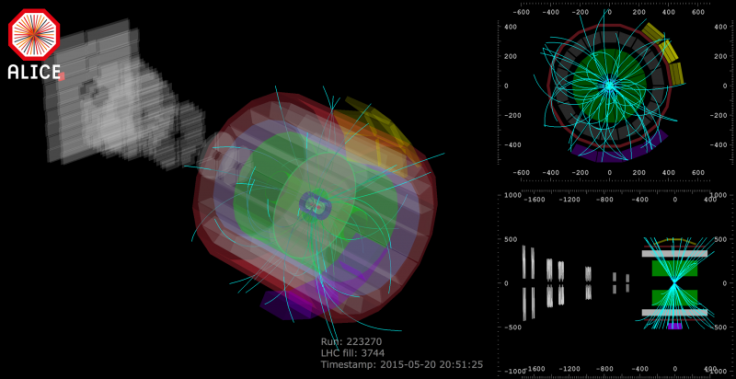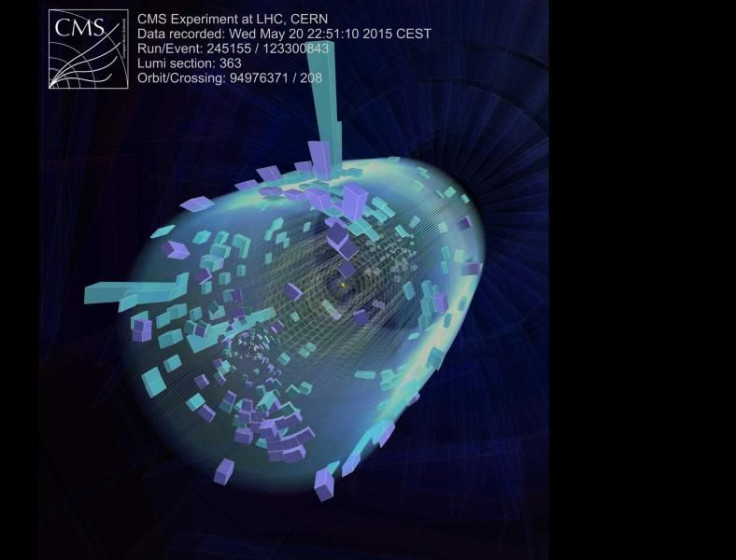CERN's Large Hadron Collider Breaks Previous Energy Record With 13 TeV Test Collisions

On Wednesday night, CERN’s Large Hadron Collider achieved a major milestone -- smashing two opposing beams of protons at energy of 13 teraelectronvolts (TeV), breaking its 2012 record of 8 TeV collisions, which had led to the discovery of the Higgs boson. From here, it’s just a matter of increasing the number of “proton bunches” in the beams -- to about 2,800 from the current one or two -- before the collider recommences its second round of operation.
The latest development comes just over a month after scientists at CERN successfully accelerated a beam at the record energy of 6.5 teraelectronvolts (TeV), which is the target for this year’s operations.
“The beams are tiny -- only about 20 microns in diameter at 6.5 TeV -- more than 10 times smaller than at 450 GeV,” Jorg Wenninger from the LHC Operations team said in a statement released Thursday. “We have to scan around -- adjusting the orbit of each beam until collision rates provided by the experiments tell us that they are colliding properly.” The “injection energy” for the circulating proton beams in April was 450 GeV, which was then gradually increased.
LHC’s second “physics run,” when it will start collecting data from the collisions of proton beams, is expected to begin early in June. Until then, scientists would observe the test collisions to ensure that the detectors, magnets and collimators are working properly. Collimators are used to align the proton beams along the nearly 17-mile-long ring of the collider.

“When the positioning of all collimators has been validated, the LHC will switch over to production mode and become a ‘collision factory,’ delivering data to experiments,” Wenninger said.
Once that happens, scientists would be looking to discover exotic new particles that either bolster or “break” the Standard Model of physics. And, since the collisions would be taking place at energies never achieved before, physicists at CERN hope that the detection and subsequent study of new particles would provide answers to a wide variety of fundamental questions. These range from the reason behind the abundance of matter and the lack of antimatter in the universe, the make-up of the mysterious “dark matter” and “dark energy,” which together constitute nearly 95 percent of the cosmos, and evidence for “supersymmetry,” which predicts the existence of more massive “super partners” for every known particle.
“We haven't yet begun the voyage to new frontiers,” CERN said in the statement.
© Copyright IBTimes 2024. All rights reserved.





















